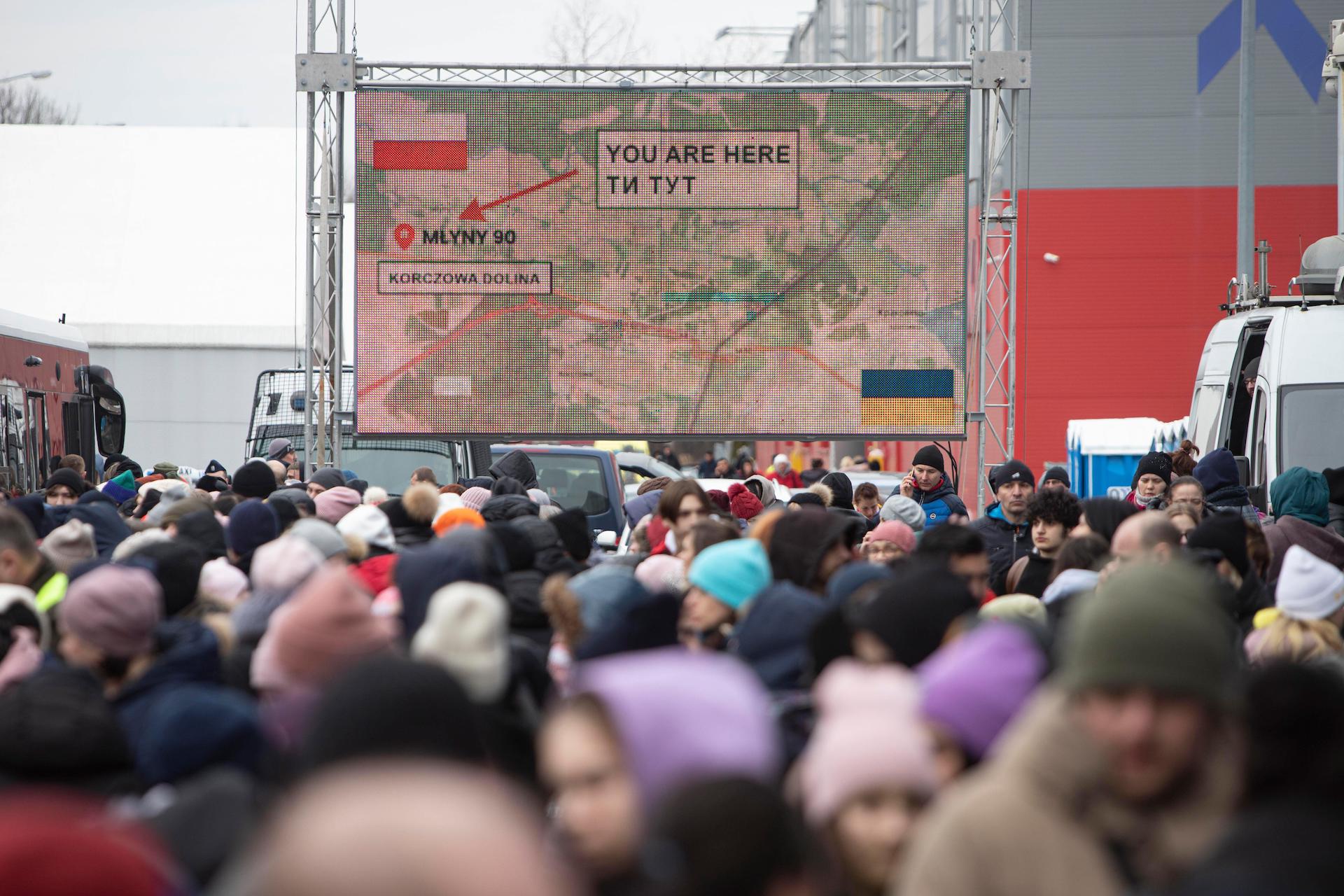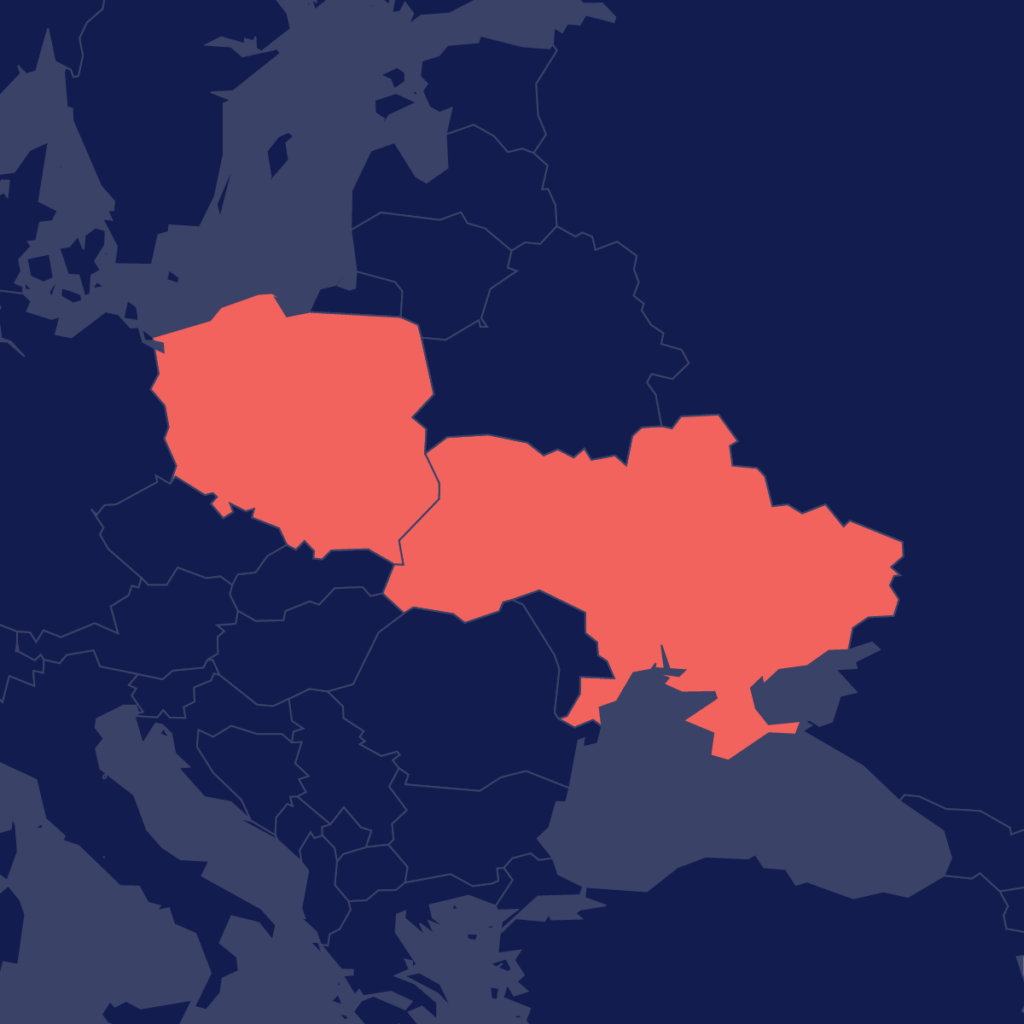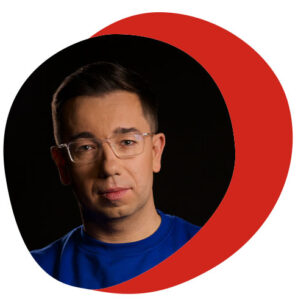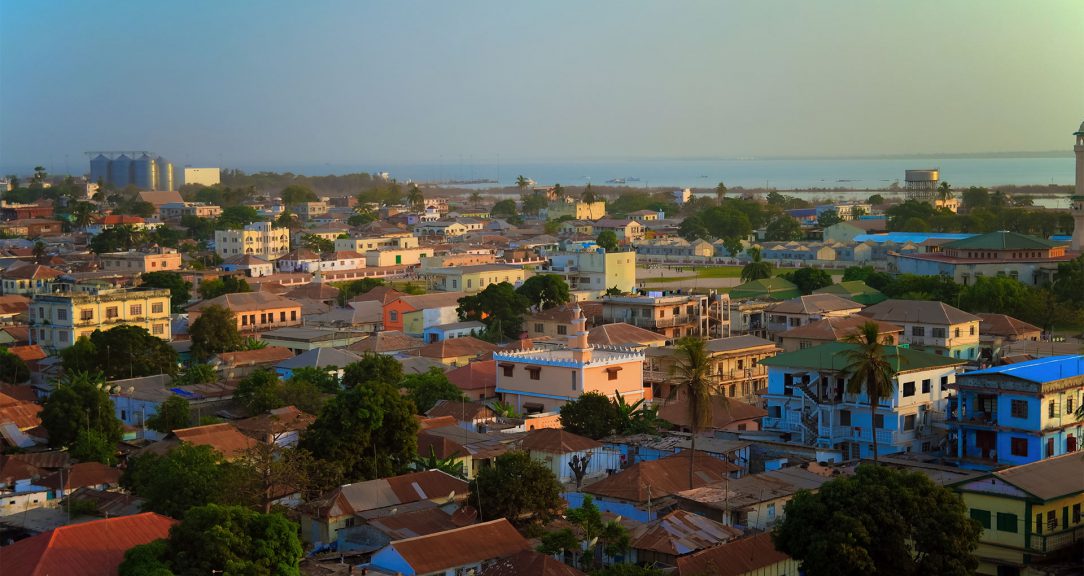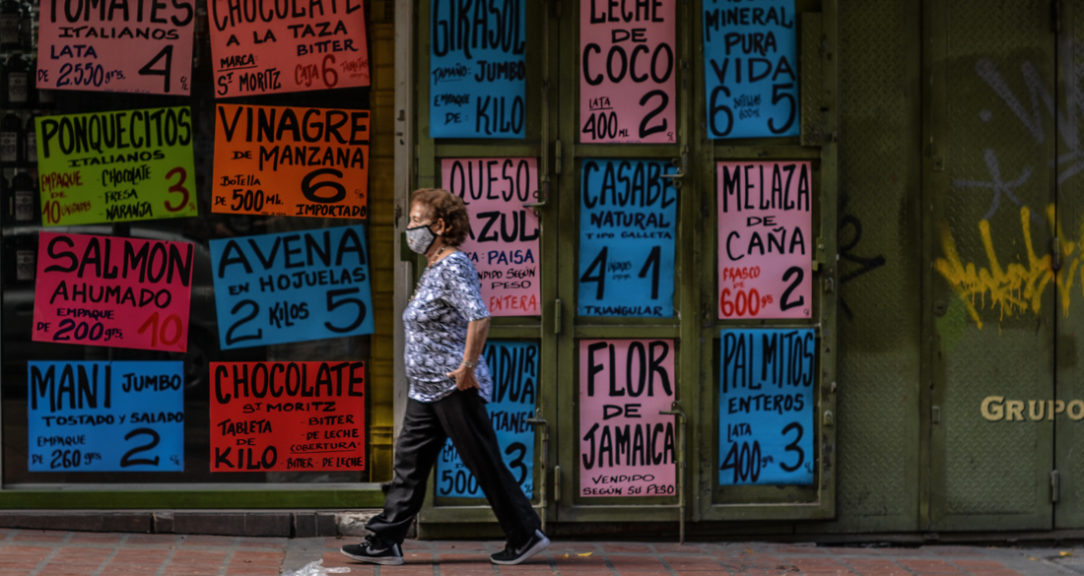At 5 a.m. on 24 February 2022, in a house surrounded by forest in the suburbs of Kharkiv, Kateryna Remizantseva woke to the sound of explosions. “It was unbelievable,” she says.
Remizantseva was expecting the day to begin like any other, waking at 6 to get her two daughters ready for school before leaving for work herself. But around 7 a.m., a teacher called to tell the children to stay at home. “Immediately afterwards we got similar information from work,” she says.
Kharkiv, the second-largest city in Ukraine and home to 42 universities and colleges, is just 40 kilometers from the border with Russia. From February to May, it bore heavy rocket attacks and on-the-ground fighting, and an estimated two-thirds of its 1.5 million residents fled.
But on that first morning in February, 41-year-old Remizantseva didn’t imagine that in just a few days she would leave her home, husband and parents for Poland — or that after six months she and her daughters would still be across the border. UNHCR, the UN Refugee Agency, estimates that of the more than 7 million refugees from Ukraine, about 2 million have fled to Poland.
Of the many challenges a refugee has to face, one becomes urgent immediately: How will I earn money? Poland, which has faced labor shortages for years, is welcoming Ukrainians with open arms.
“We thought it would be a few days, a few weeks of fighting at the most, after which the situation would calm down,” Remizantseva says. But the bombing did not stop, and her older daughter could not sleep, her mental state worsening with each explosion.
After a week, the family decided that Remizantseva and her daughters would go to stay with family friends in Chernivtsi, near Ukraine’s western border with Romania.
But the train they were on changed its route, and the family ended up in a city near Lviv. There, they stayed with friends of friends, who advised them to go straight to Poland. After two days of deliberation, the mother and daughters set off by car towards the Polish border with two suitcases, like hundreds of thousands of other families.
On 7 March, Remizantseva and her daughters entered Poland by foot. “At the border I was most surprised not by the amount of people being dealt with by volunteers, but the amount of pets. The Poles even thought of our dogs and cats in such a situation,” she says. From that moment, she understood that she was starting a new phase of her life.
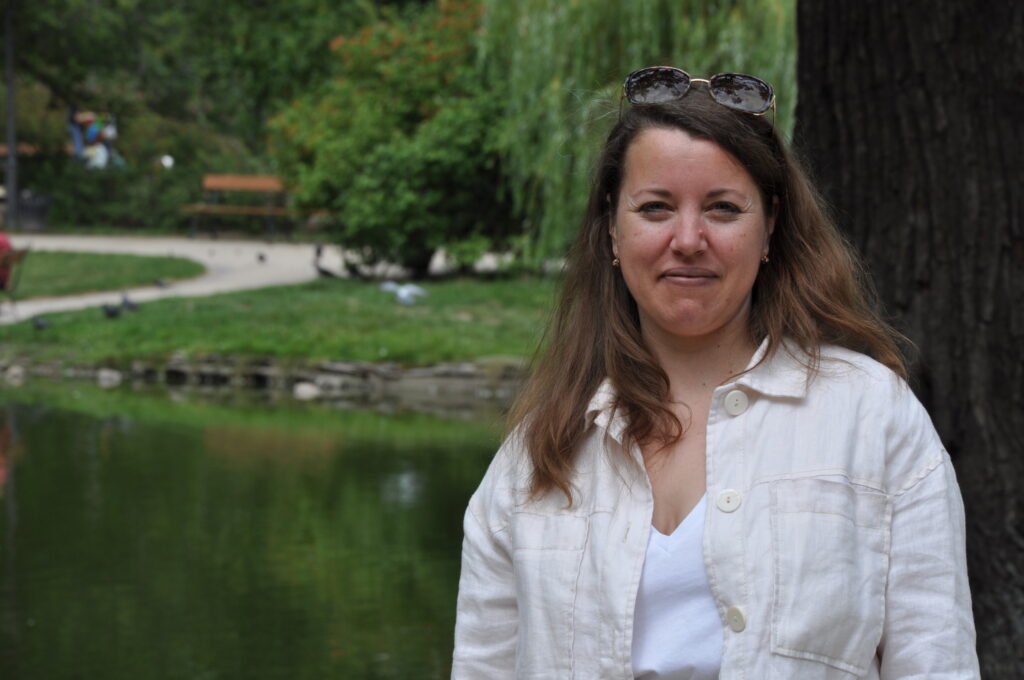
Starting over
Even before the war, Poland was a frequent destination for Ukrainian migrants. Before February 2022, more than 1 million Ukrainians lived in Poland, mainly men working in logistics or construction. Once the war broke out, many of those Ukrainians returned to defend their homeland.
And Poland became a main destination for women, children and the elderly fleeing the war in Ukraine — it was easy to reach and would be easy to return home from. Friends of friends took Remizantseva and her daughters to a small town in the east of Poland, but after less than a week they decided to leave for Warsaw, like many refugees seeking more opportunities in the capital.
A study published in April 2022 by the Union of Polish Metropolises reported that in the first months of the war, the population of Warsaw increased by 15% and Poland as a whole by 8%.
Remizantseva’s daughters quickly found places in Polish schools, like 200,000 other children. Up to 800,000 school-age children have crossed the border, according to the Polish education ministry, but most of them attended online classes from Ukrainian schools.
“Right from the moment I arrived, I was thinking about work, because after all you can’t live anywhere without money,” Remizantseva says. Ukrainians who have fled fighting but stayed in the country are often entitled to a portion of their usual wages, but once Remizantseva arrived in Poland, she no longer received her salary.
She started looking for a job on the internet, sending dozens of CVs a day. Remizantseva has been a professor for 20 years, teaching English at a university in Kharkiv. According to research by EWL, one of Poland’s largest temporary work agencies, women make up 90% of the Ukrainian refugees in the country, and more than 50% of them hold university degrees. Remizantseva got some work offers in April, but the jobs wouldn’t start until 1 September.
Seeking money to tide her and her girls over, Remizantseva tried to find a job in a kindergarten, but the response was “no Polish, no job.” Like most refugees coming from Ukraine, Remizantseva does not speak Polish. She tried to find a job in a hotel but also without any luck.
Solomiia Horodetska of Lviv has found it even harder to find your way in a new country with young children. The 28-year-old mother of 4-year-old Veronika and 5-year-old Vadym searched for a job for a month, fruitlessly.
Horodetska speaks Polish reasonably well, as she worked for eight months in a yogurt factory in Poland before having children. When her eldest was born, she stayed at home.
“Without children, you can find a job in a week,” she says. Since April, Horodetska has been working as a coordinator of VDoma (Ukrainian for “at home”), a program that helps Ukrainians find their way in the Polish labor market.
There are some cultural differences. In Poland, offices usually operate from 9 a.m. to 5 p.m., while in Ukraine from 7 a.m. to 3 p.m. That requires different childcare considerations, which become more complicated when you’re in a foreign country away from your networks of friends and family.
And many of the jobs that are open require hard labor. Since the start of the war, there has been a ban on men under the age of 60 leaving Ukraine. That has created a mismatch in the Polish labor market, says Andrzej Arendarski, president of the Polish Chamber of Commerce.
“At the moment, as a business, we are focusing on matching and making more flexible job offers for job seekers,” Arendarski says. “It takes time, patience and forbearance for things to settle down properly, so that people forced to leave their homes can find a new place with us. This is a challenge for us as a business, but also for society as a whole. But there is no doubt that we are all trying.”
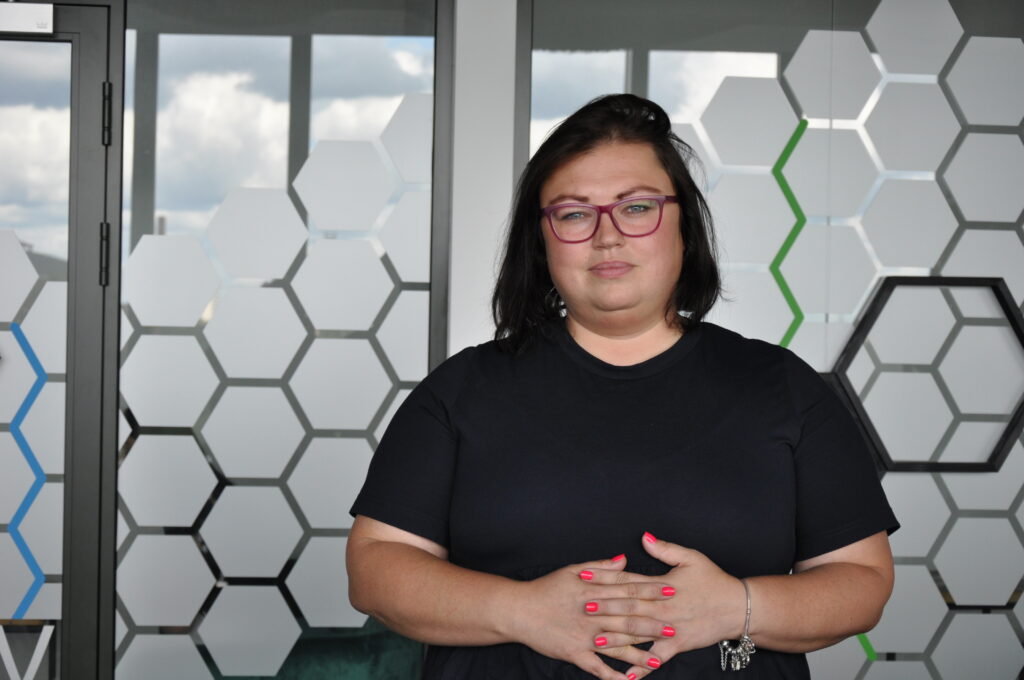
Finding their way
In the first weeks after the war broke out, just 30% of Ukrainian refugees intended to stay in Poland for more than a year, according to research by EWL. Six months into the war, about 50% of refugees intend to stay in Poland for more than a year.
This is partly because of the war dragging on, but certainly also because of the measures Poland has taken to integrate the refugees, such as speeding the process to receive work permits.
“Previously, it used to take a month for formalities, but now it is possible to get everything done in one day,” says Michalina Sielewicz, international development director at EWL. Poland’s implementation of the EU directive for Ukrainian war refugees gives them the same labor rights as Poles. The total number of legally employed Ukrainians in Poland in August was 770,000, according to the Ministry of Labor and Social Policy.
The unemployment rate in Poland in June 2022 was just 2.5%, the second lowest in the European Union, according to Eurostat. Poland has faced labor shortages for almost a decade, and the recent exodus of Ukrainian men sharpened the situation. “With the current situation on the labor market, refugees can choose from offers,” Sielewicz says. EWL currently employs 12,000 workers, more than half of whom are refugees.
When Remizantseva received her PESEL, the central registration number all refugees have to apply for, she saw a leaflet for job-seeking Ukrainians, listing the address of an employment agency in Warsaw. She went there to ask about the job, and two recruiters immediately interviewed her about work experience and expectations.
“When they realized I spoke good English, they made me a job offer from an international company,” she says. The recruiters sent in her CV, and after a few days the head of HR from the company called, inviting Remizantseva for a meeting on 30 March.
Along with the interview, she did language, math and logic tests, but “before I even got home, I got a phone call saying I could start in two days, on 1 April, or in a month. I didn’t want to wait!” Remizantseva says. “I was very lucky, because without knowing Polish, I found a good job in a few days, which is basically impossible.”
The past six months have shown that language skills are more important than a diploma for Ukrainian refugees in the Polish labor market. In addition, the job centers also organize language courses, 25 hours a week. Refugees receive around 2,000 zloty (PLN, $430) from the state for attending them.
“From the point of view of the Polish labor market, although we are aware of possible threats, we also see opportunities arising from the inflow of Ukrainian citizens to our labor market. We have been facing staff shortages for years, and the employment of foreigners, at least in part, bridges these shortages,” the Ministry of Labor and Social Policy said in a statement to the ReThink Quarterly. “There was still the greatest shortage of hands in manual labor occupations, but highly qualified professionals such as accountants, teachers and programmers are also in demand.”
But not all of the jobs are in Warsaw.
“We have a lot of jobs in places that are not a first choice, which are outside the big cities. That’s where the manufacturing and logistics companies are located,” says Sielewicz. However, refugees do not want to move out of the big cities. Nor do they want to commute; few Ukrainian women have a driving license, Sielewicz says.
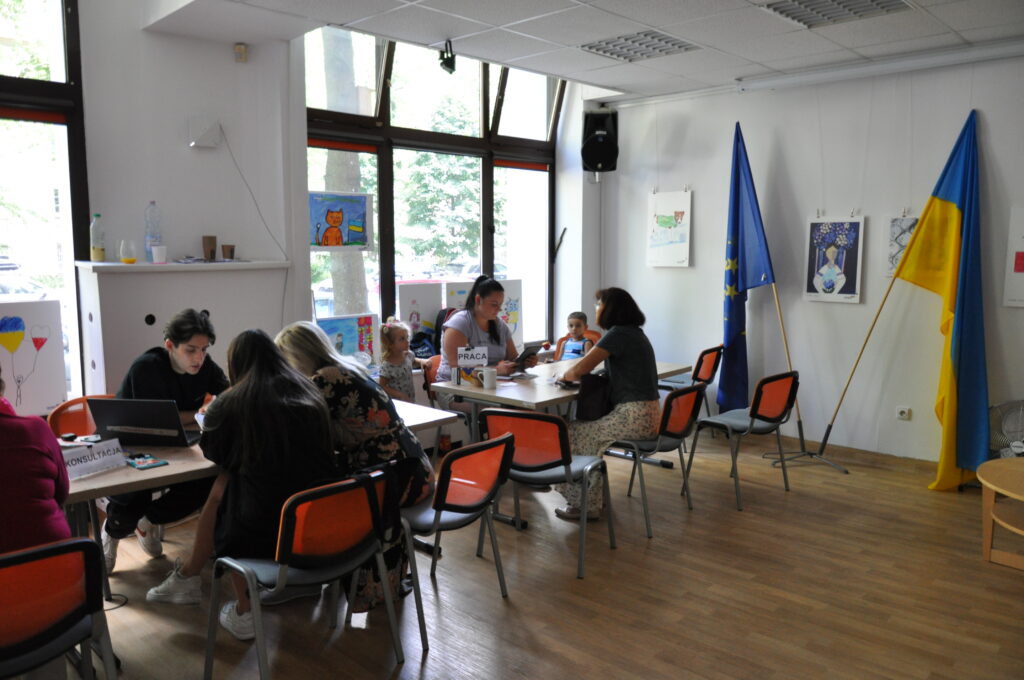
The future
It’s hard to make life plans in wartime.
“Many of the women are in a bad mental state, a bit traumatized. They didn’t come here to earn money, they just fled the war. They lost their sense of security,” says Zuzanna Piasecka, president of Fundacja Empiria i Wiedza, a foundation that runs the VDoma project. “This is a completely different motivation from economic migrants, for whom Poland opened its borders a few years ago.”
Piasecka and her team predicted 20,000 people would apply for help via VDoma, but by mid-August, only 4,000 people had applied and about 500 of them had found employment. “These women have ambition, but they don’t want to do a job below their qualifications,” she says. Some prefer to live off their savings and wait out the war.
Before she could start working, Remizantseva had to attend a paid month of training in Ostrava in the Czech Republic. She could only come back for weekends, so her parents came from Kharkiv for a month to take care of her girls. After another two months of training in Warsaw, she now works with aircraft, controlling the weight and balance of loading the passenger and cargo sections.
“It’s a difficult job, but I enjoy it. I get on the phone with people from all over the world and we make decisions together,” Remizantseva says. She first got a three-month contract, followed by a full-time permanent position directly with the company.
It doesn’t seem like there’s an end to the war in sight, and with the fall semester starting, children have to settle in for school. “We are expecting a second migration wave,” Sielewicz says.
Although Remizantseva moved to Poland for the safety of her family, she has also found an economic benefit in her new life.
“I earn more than if I worked as a teacher,” she says. Her monthly salary is around the national minimum wage — PLN 3,010 ($640), common for most refugees. In addition, she receives a PLN 500 child benefit per month from the state for each child. She wouldn’t mind teaching again some day, but perhaps only as a side gig.
“It is easier to live in Poland than in Ukraine,” says Remizantseva, who used to earn around $300 per month at the university in Kharkiv. The minimum monthly wage in Ukraine before the war was about $175.
That is why Remizantseva sees her future in Poland: “It’s a difficult situation because we are talking about Kharkiv, which has been badly damaged. It will take years to rebuild it, and my children and I have only one life,” she says. She hopes that her husband will join them in Poland after the war, but they are not making plans just yet.
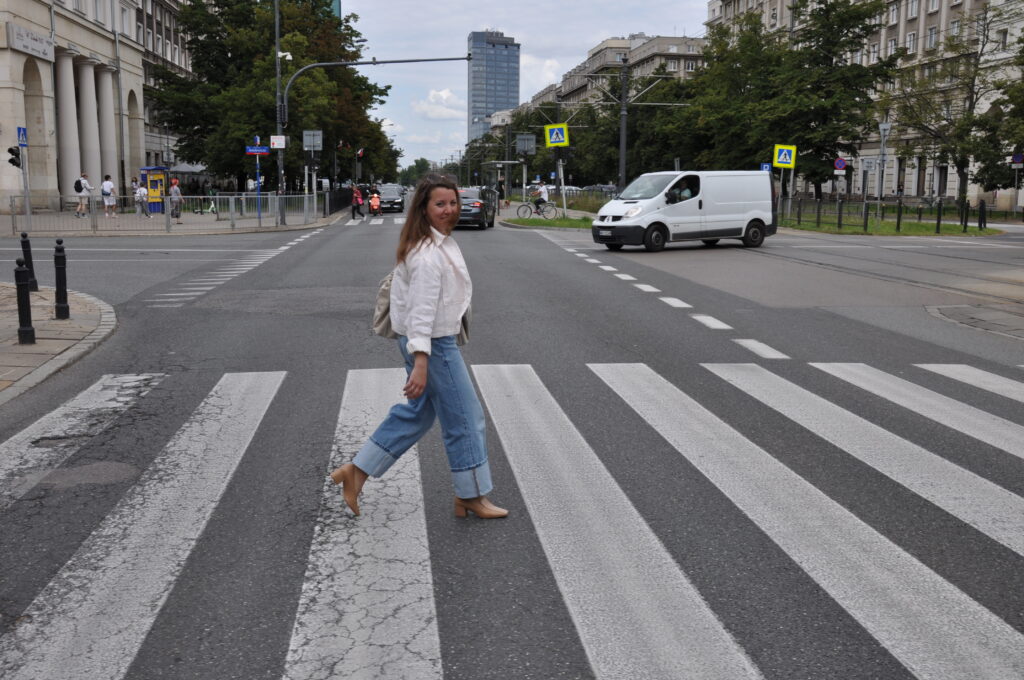
Read more
Sign up to keep up to date with ReThink Q.
